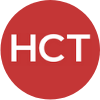Healthcare Executive: Strategies to Minimize the Impacts of Inflation Across Healthcare
Inflation is everywhere these days. Whether it's due to geopolitical conflict or breakdowns in global production and supply chains, no industry has been spared from rising costs. And while the healthcare industry had been slow to feel its influence—inflation within healthcare was roughly 2% in November 2021, compared to 7% nationwide — even here, it has been steadily rising since September 2021, reaching a new high in September 2022.
I previously looked at the inflationary forces at work within healthcare, from labor costs to drug prices. But there are other factors affecting the current healthcare revenue cycle. For example, many patients are delaying care, either due to expenses or lingering concerns over COVID, resulting in a decrease in hospital revenue. This is particularly problematic during a time when health systems have already been under fire for a lack of transparency surrounding their pricing.
So What Can Be Done?
To be sure, there are no easy answers that can solve inflation, nor do we know how long this period of inflated prices will last — this problem could be with us for a few months or a few years (subscription required). But that isn't to say healthcare organizations are without options. Leaders looking to mitigate the effects of inflation should forgo trying to identify a "magic bullet" solution and consider multiple potential cost-saving strategies.
1. Improve workforce efficiency.
I've previously discussed ways in which healthcare organizations can improve efficiency and limit turnover, such as ensuring your specialized medical talent are using their skills and gifts appropriately, and not on cleaning or clerical duties. If you haven't already, now is the time to look for opportunities to incorporate automation, such as through patient access, reminders and payment/collections.
2. Maximize revenue by easing the concerns of potential patients.
As mentioned previously, healthcare has not yet felt the full effects of inflation, which means it is in our patients' best interests to seek care sooner rather than later. Greater price transparency, easier scheduling and billing, assistance for patients navigating their insurance coverage and a commitment to pandemic-related safety can all ease patients' reluctance to come in for care.
3. Build relationships within your community.
In times of economic stress, consumers are especially sensitive to costs and quick to accuse institutions of price gouging. While it might not be possible to completely insulate your organization from criticism, the more you can demonstrate that you care about the people you serve and are a trusted community resource, the less resistance you might encounter from people who need care.
4. Dive into your organization's analytics.
When profit margins are razor-thin, you don't want to pay for labor resources no one is using. Consider taking a closer look at what care your community needs and when they need it. Are there hours, days or weeks when patients do (or don't) seek care? Are there services you offer that your community doesn't fully take advantage of (or even know you offer)? Or how about the reverse: Are there services you don't yet provide that your community would benefit from? In times of high inflation, it's critical to eliminate as much inefficiency as possible — resource management is another area in which artificial intelligence could be of use.
Final Thoughts
Inflation is a concern that will likely continue throughout 2023, if not longer (potentially much longer). The better healthcare organizations can plan for and adapt to this period of heightened costs, the better off they'll be when we emerge on the other side.
Previously published on Newsweek.


